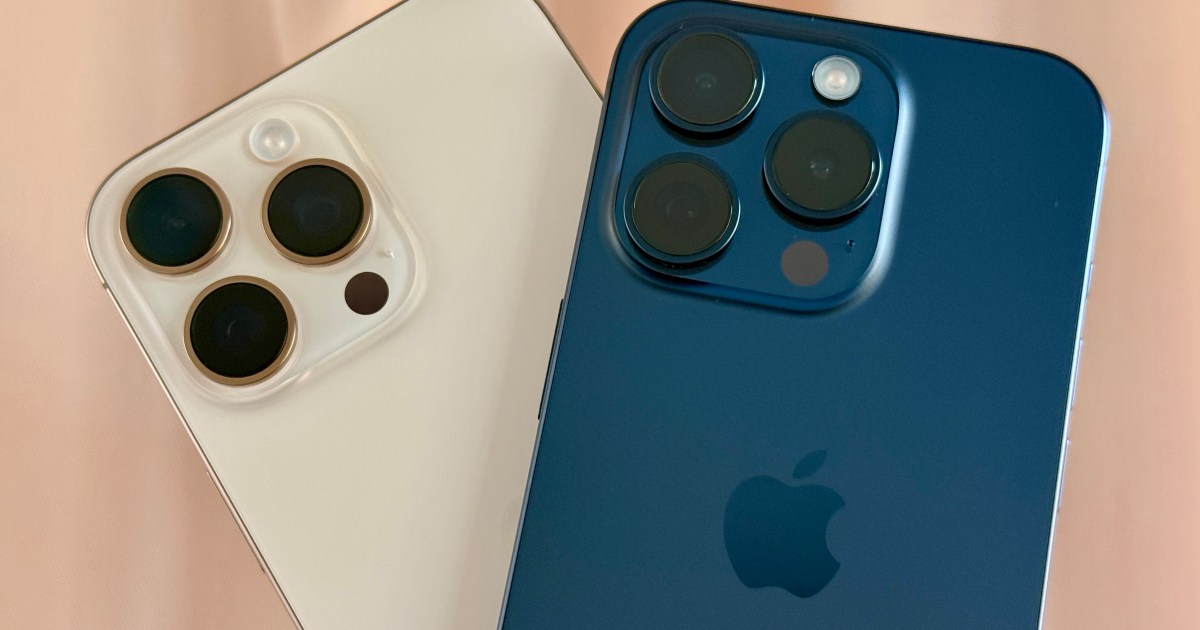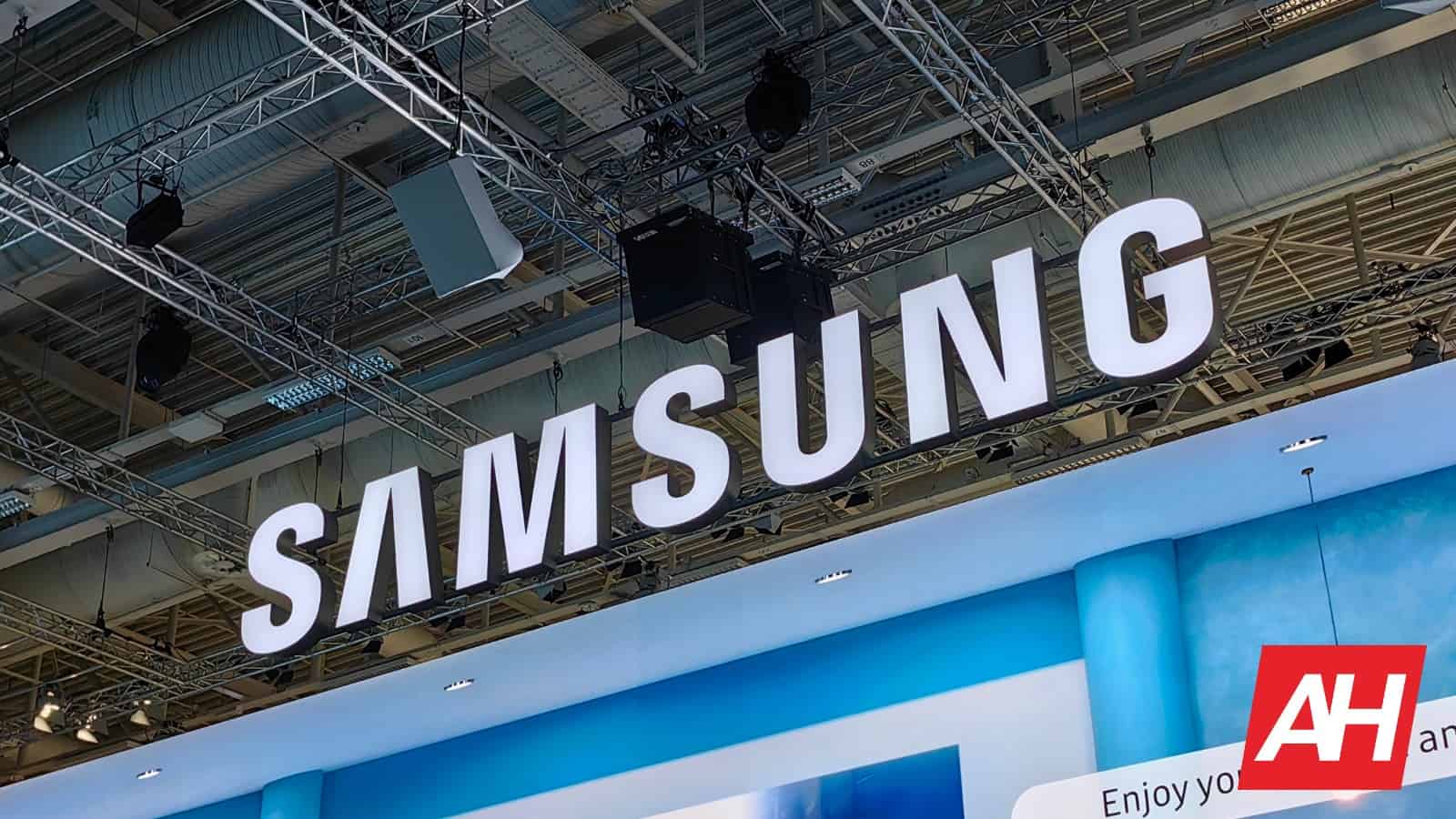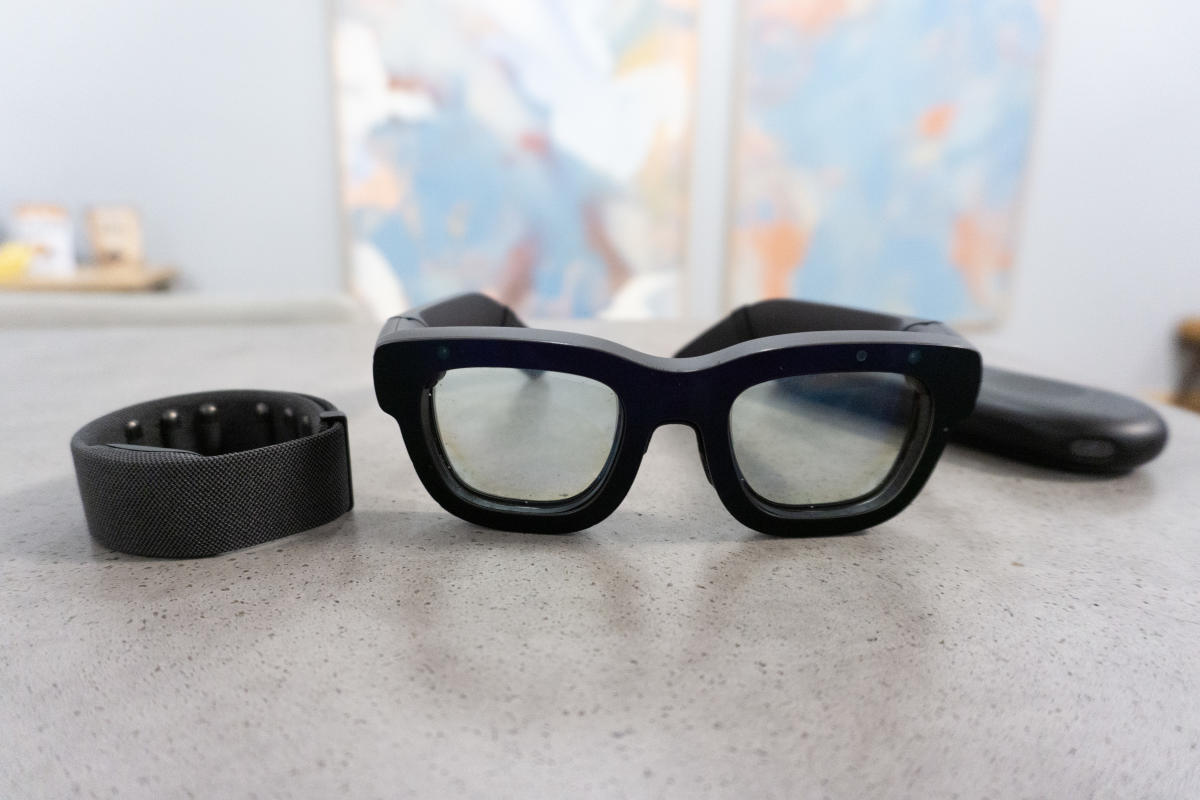Russ Crandall knows how to reinvent himself. At 24, he relearned how to walk and write after a stroke impacted his brain. When open-heart surgery wasn’t enough to address a rare autoimmune disease, he adopted a paleo diet — and became a New York Times bestselling cookbook author and food blogger following his seemingly miraculous recovery. Last year, he retired from a 22-year career as a US Navy translator to become a full-time YouTuber instead.
Technology
Why is Nintendo targeting this YouTuber?

Now, he’s wondering if Nintendo will force him to change yet again.
Crandall runs Retro Game Corps, a YouTube channel with half a million subscribers that shows hundreds of ways to play classic games using modern hardware and emulation. If there’s a handheld gaming device released in the past four years, odds are Crandall has made a 20-minute video about it. He started the channel as a hobby in 2020 during the covid-19 pandemic but soon realized it could become his day job.
So, last year, he shut down his food blog — “I was kind of done telling people what to eat,” he says — and left the military with the rank of master chief petty officer.
But four years into his YouTube career, on September 28th, Crandall saw how easily his new life as a content creator could disintegrate. Walking back from his studio after pulling an all-nighter, he checked his phone to see if a just-edited video was uploading properly. It was — but another one of his videos vanished before his eyes. Days earlier, he’d published a 14-minute video about how well Nintendo Wii U games can run on Android handhelds, and now it had been wiped from YouTube.
“This can’t be happening,” he recalls saying out loud. A few minutes later, a YouTube email confirmed it wasn’t a glitch: Nintendo had issued a DMCA takedown notice, YouTube had removed his video, and his entire 500,000-subscriber channel was now at risk of permanent deletion.
“We’ll have to terminate your channel” after one more strike, YouTube warned
It was his second YouTube copyright strike from Nintendo, and Crandall says that’s when it truly sank in. YouTube maintains a strict “three strikes, you’re out” rule, and he realized his family’s livelihood depended on preventing strike number three. “It all sort of came crashing down in that moment,” he tells The Verge.
In a panic, he rushed back to the studio, canceled his upload, and publicly declared that Nintendo was targeting him. He would begin self-censoring all his videos to hopefully escape the Japanese company’s wrath. “I will no longer show any Nintendo games on-screen,” he told his fans and related communities on Reddit, YouTube, and social networks.
Nintendo was well within its rights to ask for a takedown, of course: Crandall had shown the company’s copyrighted content onscreen. And yet that doesn’t explain the copyright strike at all since countless Twitch streamers, YouTubers, TikTokers, and Instagrammers show Nintendo content every single day. Clearly, Nintendo was using copyright as a pretext to get these videos taken down.
Most institutions have historically taken Nintendo’s legal threats seriously. Countless fan projects, including unofficial remakes and sequels, have been voluntarily terminated by their creators after receiving cease and desist orders from Nintendo. While the technology behind video game emulators is generally considered legal, even the lead developers of the Nintendo Switch emulators Yuzu and Ryujinx folded when Nintendo came knocking on their doors.
But unlike many of those developers, Crandall isn’t some pseudonymous person who could slink back into the internet’s shadows. Nor is he someone Nintendo can readily accuse of “facilitating piracy at a colossal scale,” like Yuzu, for distributing software tools.
Even among content creators, Crandall doesn’t seem like the kind of person Nintendo usually threatens — he’s known for advocating that people should buy Nintendo products before they use emulators and often shows off physical cartridges in his videos to drive that message home.
“If I’m playing a Switch game on my Steam Deck, the cartridge will be there or the box will be there to indicate that I have purchased the game,” he says. While he admits he hasn’t done that 100 percent of the time, he’s been careful with Nintendo Switch games in particular. In one of the videos that YouTube removed, he flips through a wallet full of 80 genuine cartridges. He also produces guides on how to create personal backups of your own genuine classic games.
That’s why the community was so surprised when Nintendo targeted him, of all YouTubers — and it’s why Crandall might possibly take the unusual step of challenging Nintendo’s takedowns.
Crandall says he’s been a Nintendo fan for nearly 40 years, ever since his family bought an NES for Christmas in 1985. The copyright strikes hit hard. “This is the first actual interaction I’ve had with Nintendo, and it’s crazy. I feature most of their games not because I’m trying to, like, stick it to them, but just sharing the love of those games,” he says.
But he does have a guess as to why Nintendo targeted him. The first copyright strike landed on his video about the MIG Dumper and the MIG Flash, a pair of devices that let you turn genuine Nintendo Switch cartridges into digital files and then carry around an entire library of those ROMs in a special microSD-equipped flash cartridge for your console. I’ve watched the video, and while Crandall does explicitly take an anti-piracy stance, it’s easy to imagine these gadgets being used by bad actors, too.
“I think the first strike was simply due to the fact that they wanted to minimize attention around the MIG Flash cartridge and dumper, and they had an opportunity,” Crandall says. That opportunity was a relatively tiny mistake: unlike, say, fellow YouTuber Taki Udon’s video on the MIG products, Retro Game Corps showed off four seconds of the title screen of Mario to prove the MIG hardware could legitimately dump and run games, potentially infringing Nintendo’s exclusive right to distribute and / or perform its audiovisual intellectual property.
Isn’t that fair use? Crandall thinks so. It seems like his uses could be brief, limited, and educational enough to satisfy the four-factor fair use test, and arguing that could genuinely get him out of YouTube purgatory. I could easily find dozens of similar examples in our journalism here at The Verge. But in order to submit what’s called a “copyright counter notification” with YouTube, which argues that he’s been inaccurately targeted and isn’t infringing on someone’s copyright, Crandall would have to open himself up to a potential Nintendo lawsuit.
“It’s a dangerous game,” says Richard Hoeg, a business attorney who hosts the Virtual Legality podcast. “You really don’t want to get into federal court over something that even if you win, will be an expensive and time-consuming burden.”
But Crandall knows this — he seems quite read up on both the DMCA and YouTube processes — and yet he’s considered at least trying his luck. Crandall says he’s conflicted; he doesn’t want to “poke the bear.” He has his family to think about. But it’s possible Nintendo could continue to come after him, he admits, even if he lies low.
While he’s already eliminated Nintendo games from his testing suite for all future videos, he says he simply doesn’t have time to go back through the hundreds of videos he’s created that already contain Mario footage and blur or delete every last scrap. And yet, the way things stand, Nintendo could pick any of those videos to immediately designate his channel for deletion.
Companies can freely pick and choose who they target with copyright infringement complaints and lawsuits, several legal experts tell me. Unlike with trademarks, they don’t need to actively or consistently defend their works in order to maintain their rights.
Crandall says that even YouTube initially thought that perhaps Nintendo made a mistake when targeting him. He’s part of the YouTube Partner Program, and his designated partner manager told him to sit tight while YouTube asked Nintendo if it might retract its own takedown requests. But Nintendo wouldn’t, and YouTube has now told him he’s on his own.
As of late October, he’s waffling. He could simply wait two more months until YouTube’s 90-day copyright strikes expire because, as soon as they do, his channel will no longer be in danger of immediate termination. Nintendo’s takedown requests already succeeded in removing those videos, and he can hope Nintendo feels it’s made enough of an example out of him to do anything more.
Or he can submit a document that shows he’s not willing to be that example, not willing to be pushed around by Nintendo — and hope it doesn’t land him in a world of legal hurt.
It’s painful for Crandall, who has been a lifelong fan of Nintendo’s work. Even after a long day of making videos about games, he likes to relax by playing through a couple of classic Mario or Donkey Kong levels, purely to admire the artistry and design. “Since the second strike I haven’t been doing that much at all, because even just seeing the box art leaves a bit of a sour taste in my mouth,” he says.
Nintendo didn’t respond to repeated requests for comment.
Science & Environment
Exxon CEO says U.S. election won’t affect oil production


The outcome of the U.S. presidential election on Nov. 5 won’t affect oil production levels in the short- to medium term, Exxon CEO Darren Woods told CNBC on Friday.
Former President Donald Trump has called for unconstrained oil and gas production to lower energy prices and fight inflation, boiling his energy policy down to three words on the campaign trail: “Drill, baby, drill.”
“I’m not sure how drill, baby, drill translates into policy,” Woods told CNBC’s “Squawk Box” Friday after the largest U.S. oil and gas company reported third-quarter results.
Woods said U.S. shale production does not face constraints from “external restrictions.” The U.S. has produced record amounts of oil and gas during the Biden administration.
Over the past six years, the U.S. has produced more crude oil than any other nation in history, including Saudi Arabia and Russia, according to the Energy Information Administration.
Output in the U.S. is driven by the oil and gas industry deploying technology and investment to generate shareholder returns based on the break-even cost of production, the CEO said.
“Certainly we wouldn’t see a change based on a political change but more on an economic environment,” Woods said. “I don’t think there’s anybody out there that’s developing a business strategy to respond to a political agenda,” he said.
While shale production has not faced constraints on developing new acreage, there are resources in areas like the Gulf of Mexico that have not opened up due to federal permitting, the CEO said.
“That could, for the longer term, open up potential sources of supply,” Wood said. In the short- to medium term, however, unconventional shale resources are available and it’s just a matter of developing them based on market dynamics, he said.

Exxon Mobil shares in 2024.
The vast majority of shale resources in the U.S. are on private land and regulated at the state level, according to an August note from Morgan Stanley. About 25% of oil and 10% of natural gas is produced on federal land and waters subject to permitting, according to Morgan Stanley.
Vice President Kamala Harris opposed fracking during her bid for the 2020 Democratic presidential nomination. She has since reversed that position in an effort to shore up support in the crucial swing state of Pennsylvania, where the natural gas industry is important for the state’s economy.
Technology
Worrying WordPress plugin security flaw could let hackers hijack your site


LiteSpeed Cache, an immensely popular WordPress plugin for site performance optimization, suffered from a vulnerability which allowed threat actors to gain admin status.
With such elevated privileges, they would be able to perform all sorts of malicious activities on the compromised websites.
According to researchers from Patchstack, the vulnerability was discovered in the is_role_simulation function, and it is relatively similar to a different vulnerability that was discovered last summer. The function apparently used a weak security hash check that could be broken with brute force, granting the attackers the ability to abuse the crawler feature and simulate a logged-in administrator.
Who is vulnerable?
There are a few factors that need to align before the vulnerability can be abused, though.
That includes having the crawler turned on, with run duration between 2500 and 4000, and the intervals between runs being set to 2500- 4000. Furthermore, Server Load Limit should be set to 9, Role Simulation to 1 (ID of user with admin role), and Turn every row to OFF except Administrator should be activated.
The vulnerability is now tracked as CVE-2024-50550, and has a severity score of 8.1 (high severity). It was already patched, with the version 6.5.2 of the plugin being the earliest clean one. LiteSpeed Cache is one of the most popular plugins of its kind, with more than six million active installations.
There is no talk of any evidence of in-the-wild abuse, so chances are cybercrooks have not picked up on the vulnerability in the past.
However, now that the patch is public, it’s only a matter of time before they start scanning for vulnerable websites. Currently, almost three-quarters (72.1%) of all LiteSpeed Cache websites are running the latest version, 6.5, with 6.7% running 6.4, and a notable 21.2% running “other” versions. Therefore, at least 27.6% of sites could be targeted, which is more than 1.6 million.
More from TechRadar Pro
Technology
One in 20 new Wikipedia pages seem to be written with the help of AI

Just under 5 per cent of the Wikipedia pages in English that have been published since ChatGPT’s release seem to include AI-written content
Technology
iPhone 16 Pro vs. iPhone 15 Pro camera comparison: close call

Apple’s iPhone 16 lineup is here. Though the base model iPhone 16 has taken a lot of the spotlight this year with the redesigned camera layout and amazing colors, the iPhone 16 Pro is a bit more iterative in terms of upgrades.
I personally bought an iPhone 16 Pro to upgrade from my iPhone 15 Pro. To be honest, though, if the iPhone 16 had a 1TB storage option, I would have gone that route. Since it doesn’t, I had to go with the iPhone 16 Pro, as much as I wanted a pink phone. But storage wasn’t the only reason — I also wanted the improved telephoto camera that I missed out on last year.
So, was going to the iPhone 16 Pro from the iPhone 15 Pro worth it? Let’s find out.
iPhone 16 Pro vs. iPhone 15 Pro: camera specs
| iPhone 16 Pro | iPhone 15 Pro | |
| Primary camera | 48MP Fusion
f/1.78 |
48MP Main
f/1.78 |
| Ultrawide camera | 48MP
f/2.2 |
12MP
f/2.2 |
| Telephoto camera | 12MP
f/2.8 5x optical zoom |
12MP
f/2.8 3x optical zoom |
| Selfie camera | 12MP
f/1.9 |
12MP
f/1.9 |
As you can see above, the cameras between the iPhone 15 Pro and iPhone 16 Pro are similar but with a few key differences.
For one, the iPhone 16 Pro now has the 5x optical zoom that was previously only on the iPhone 15 Pro Max model last year, as Apple made the camera systems on both models equal this time.
Apple also improved the ultrawide camera on the iPhone 16 Pro, going to 48MP from the previous 12MP. This should mean better detail and resolution in your ultrawide shots, and macros can now be in full 48MP, too.
Though the main camera on both phones remains at 48MP, Apple rebranded the main camera on the iPhone 16 Pro to a “Fusion” camera rather than just “main” like it did before. Does this actually mean anything? We’ll see.
Since Apple made no improvements to the TrueDepth front camera (still 12MP and f/1.9 aperture on both), we’ll just be looking at the triple-lens camera system in this comparison. Ready? Let’s get started.
iPhone 16 Pro vs. iPhone 15 Pro: main camera
Again, the main camera on both the iPhone 16 Pro and iPhone 15 Pro is 48MP. But it’s now called the Fusion camera on the iPhone 16 Pro, rather than just the “main” camera like on the iPhone 15 Pro.
iPhone 16 Pro
iPhone 15 Pro
Let’s look at this image of a cute pumpkin carriage display at the Anaheim Majestic Garden Hotel. The most obvious difference between the two is the blue lights on the pumpkin carriage. With the iPhone 15 Pro image, the blue light bleeds into the orange of the pumpkin, making it look more blue than it actually is. The iPhone 16 Pro handles the light better, as the blue light doesn’t bleed out to the orange, and there’s more contrast.
The leaves at the bottom of the carriage and the green stem on top are also more vibrant in the iPhone 16 Pro, but the glittery leaf is more textured with the iPhone 15 Pro.
- 1.
iPhone 16 Pro - 2.
iPhone 15 Pro
Here’s a cute little Halloween tree display at the hotel. Honestly, there isn’t a big difference between these two images. The iPhone 16 Pro may have captured a bit more of the tree detail in the shadows at the bottom of the tree (the silver specks) and have less bleeding for the lights, but the iPhone 15 Pro did a better job of making the colors at the top of the tree a tad more vibrant. Otherwise, they’re both pretty equal.
iPhone 16 Pro
iPhone 15 Pro
This is a fancy chef’s omakase plate I got for my wedding anniversary dinner at Hanagi Japanese Restaurant (highly recommend!) in Anaheim. Both images are very similar, but when you look closer, the iPhone 16 Pro is better. More of the nigiri sushi pieces are sharper and in focus, making it easier to see the texture. The color is also better with the iPhone 16 Pro, as evident with the tuna and salmon roe. But again, the differences are minimal unless you really scrutinize them.
iPhone 16 Pro
iPhone 15 Pro
This is a low-light shot featuring a serene little koi pond in the garden area of the Anaheim Majestic Garden Hotel. I took the photo around 8 p.m., and there were only a few of those lamps outside. Both images look good, but the iPhone 16 Pro is a bit more vivid with the color, especially the greenery in the background. Overall, they’re pretty equal.
Winner: iPhone 16 Pro (barely)
iPhone 16 Pro vs. iPhone 15 Pro: ultrawide camera
This year, Apple made big improvements to the ultrawide camera, bumping it up to 48MP, which is what many flagship Android phones have nowadays. Apple also improved the sensors, which means it should be able to capture better ultrawide shots in low light. But does it really?
iPhone 16 Pro
iPhone 15 Pro
I used the ultrawide camera to capture the full spooky armor and dress display. Both photos look the same on the surface, aside from the slight difference in overall tone. The details are similar even when you zoom in to examine it closer. I was expecting more from the iPhone 16 Pro here, but that didn’t turn out to be the case.
iPhone 16 Pro
iPhone 15 Pro
This is a better case for the improvements to the ultrawide camera on the iPhone 16 Pro. I snapped this ultrawide shot of the koi pond at the hotel at night, and the iPhone 16 Pro version captured more light. The iPhone 16 Pro also handles the light better, as it doesn’t appear blown out like the iPhone 15 Pro image.
iPhone 16 Pro
iPhone 15 Pro
Here’s an ultrawide shot of Monstro on the Storybook Canals ride at Disneyland. Both iPhones handled the scene similarly, but the colors are a bit more vibrant in the iPhone 15 Pro image than the iPhone 16 Pro. It’s evident in the trees, the water, and Monstro himself. In terms of detail, both are about equal.
iPhone 16 Pro
iPhone 15 Pro
Now, let’s try some macro photos. Here’s a closeup of a flower’s pistil. The iPhone 16 Pro image is much clearer and brighter with the color. However, the iPhone 15 Pro version handled the contrast better, which I prefer a bit more. But as far as how everything is in focus, the iPhone 16 Pro takes the cake.
iPhone 16 Pro
iPhone 15 Pro
Let’s try another macro shot of a different flower. The difference between these two images is much more apparent. Once again, the iPhone 16 Pro version is crystal clear and in focus, while the iPhone 15 Pro image has a lot of distortion and blurriness. You can even see a bug on the bottom petal much more easily with the iPhone 16 Pro.
Winner: iPhone 16 Pro
iPhone 16 Pro vs. iPhone 15 Pro: telephoto camera
Last year, only the iPhone 15 Pro Max got the 5x optical zoom telephoto camera, as the iPhone 15 Pro had just up to 3x. But this year, Apple made the two Pro models equal in terms of camera features, so does that 5x optical zoom really make that much of a difference?
- 1.
iPhone 16 Pro - 2.
iPhone 15 Pro
Here’s a 5x zoomed-in shot of some buildings I can see across the street from the park. Since the iPhone 15 Pro uses a digital crop for its 5x zoom, the loss of detail is pretty clear when you look closely at it. For example, the texture in the wall of the beige townhomes is barely visible, whereas you can clearly see it with the iPhone 16 Pro’s 5x zoom. Other details, like the tree, also appear soft in the iPhone 15 Pro, while they’re clear with the iPhone 16 Pro.
iPhone 16 Pro
iPhone 15 Pro
I snapped another quick 5x zoom shot of some palm trees in my neighborhood. Both images look similar, but if you look a little closer, you’ll be able to see the sharpness of the leaves in the iPhone 16 Pro version, whereas they appear softer in the other. It looks like the iPhone 15 Pro also made the sky appear a more vibrant blue, which you may or may not prefer.
iPhone 16 Pro
iPhone 15 Pro
A half-moon was still out this morning, so I decided to try to see how well the zoom on both iPhones would do with it. Of course, the 5x zoom doesn’t give you a ton of detail of the moon, but you can at least make out the moon’s surface as best you can on the iPhone 16 Pro. With the iPhone 15 Pro, it’s much more fuzzy and harder to make out the different surface shades.
iPhone 16 Pro
iPhone 15 Pro
This is an interesting one. I decided to try a 3x zoom image since that’s the maximum optical zoom range for the iPhone 15 Pro. Since the iPhone 16 Pro only has 2x or 5x optical zoom, but up to 25x digital zoom, it uses digital zoom for 3x. For the iPhone 15 Pro, it has 3x optical zoom but not 5x. So this time, the tables have turned — the iPhone 16 Pro’s digital 3x zoom is not great compared to the iPhone 15 Pro’s 3x optical zoom. The left side of the rose garden looks dull and lifeless on the iPhone 16 Pro but is vibrant and crisp on the iPhone 15 Pro.
Winner: iPhone 16 Pro
iPhone 16 Pro vs. iPhone 15 Pro: verdict

If you’re still using an iPhone 15 Pro, this isn’t a recommendation to replace it right now with an iPhone 16 Pro. While the cameras are an improvement over last year, it’s still a pretty iterative upgrade, and unless you really care about the tiny details, it’s probably not worth it (for most people).
However, if you really want the 5x optical zoom that was missing last year and you enjoy taking ultrawide and macro shots, then the iPhone 16 Pro is worth considering. But for the main camera, which is likely to be the one that most people use the most, there’s very little difference, and not enough to justify the money to upgrade.
So, what’s the conclusion? If the telephoto and ultrawide cameras are your top priority, there’s a case for upgrading. But if you can do without those upgrades, and the main camera is your main concern, you can safely sit this one out.
Technology
Samsung halts operations of several chip fabs due to poor demand

The past few years have been a bit of a struggle for Exynos chips. Low-yield issues with Samsung Foundry wafers have led to the loss of big customers. The demand for chip manufacturing at Samsung factories has been poor for some time now, with only Exynos SoCs and a few third-party contracts using them.
Poor demand prompts Samsung to shut down chip factories, including some Exynos makers
Many of Samsung Foundry’s semiconductor factories were still active but not actually producing products. So, according to South Korean media Chosung, the company has decided to suspend operations at 30% of its 4nm, 5nm, and 7nm chip fabs. This is not a permanent shutdown, but a temporary one. In fact, the equipment will continue to receive power, but in a low-consumption mode to save electricity-related costs.
According to the report, the percentage of “semi-off” fabs will increase to 50% by the end of this year. Among the mentioned wafers, only the 4nm one remains permanently active, manufacturing the Exynos 2400 and some Snapdragon S chips. However, third-party demand is so low that it is far from occupying the full wafer capacity.
Samsung still hopes to improve the performance of its 3nm wafers
Currently, Samsung Foundry is struggling with the low yield of its 3nm GAA wafers. The company even had to ditch the Exynos 2500 from the Galaxy S25 series. Reports claim that they are still working on trying to improve the performance of its 3nm wafers in order to implement the Exynos 2500 in the foldable Galaxy devices of 2025.
On the bright side, the situation looks better for Samsung’s 2nm process. The South Korean giant hopes to offer competitive factories that will attract the attention of big customers. Even Qualcomm has opened the door to working with Samsung again for flagship Snapdragon chips in the near future.
Things got complicated for Samsung Foundry in 2021
Samsung Foundry’s “nightmare” began in 2021 with the Snapdragon 8 Gen 1. Qualcomm had designed the SoC with high expectations, for which it even debuted a name change. However, Samsung Foundry 4nm wafers “ruined it,” delivering chips with high power consumption and poor thermal management. Low factory yield was also an issue back then, with the percentage of usable chips produced being far from ideal.
Qualcomm acted quickly to remedy things by moving chip production to TSMC for the second half of the year. The company used the same design but slightly increased the CPU clock speeds. The result was the Snapdragon 8+ Gen 1, one of the best chips in the company’s history. At the time, Samsung Foundry was widely blamed as the source of the problems with the original chip.
In fact, the Snapdragon 888, the predecessor of the Snapdragon 8 Gen 1, was already showing some signs that something was not quite right. While the chip did not exhibit the latter’s severe problems, it already presented worse thermal control and energy efficiency than usual. Nvidia, another big player in the tech industry, also switched from Samsung to TSMC. In this way, Samsung suddenly lost its main customers for the time.
Technology
Meta’s Orion prototype offers a glimpse into our AR future

If you’re excited, or even just a little curious, about the future of augmented reality, Meta’s Orion prototype makes the most compelling case yet for the technology.
For Meta, Orion is about more than finally making AR glasses a reality. It’s also the company’s best shot at becoming less dependent on Apple and Google’s app stores, and the rules that come with them. If Orion succeeds, then maybe we won’t need smartphones for much at all. Glasses, Zuckerberg , might eventually become “the main way we do computing.”
At the moment, it’s still way too early to know if Zuckerberg’s bet will actually pay off. Orion is, for now, still a prototype. Meta hasn’t said when it might become widely available or how much it might cost. That’s partly because the company, which has already poured tens of billions of dollars into AR and VR research, still needs to figure out how to make Orion significantly more affordable than the $10,000 it costs to make the current version. It also needs to refine Orion’s hardware and software. And, perhaps most importantly, the company will eventually need to persuade its vast user base that AI-infused, eye-tracking glasses offer a better way to navigate the world.
Still, Meta has been eager to show off Orion since at Connect. And, after recently getting a chance to try out Orion for myself, it’s easy to see why: Orion is the most impressive AR hardware I’ve seen.
Meta has clearly gone to great lengths to make its AR glasses look, well, normal. While Snap has been mocked for its oversized Spectacles, Orion’s shape and size is closer to a traditional pair of frames.
Even so, they’re still noticeably wide and chunky. The thick black frames, which house an array of cameras, sensors and custom silicon, may work on some face shapes, but I don’t think they are particularly flattering. And while they look less cartoonish than Snap’s AR Spectacles, I’m pretty sure I’d still get some funny looks if I walked around with them in public. At 98 grams, the glasses were noticeably bulkier than my typical prescription lenses, but never felt heavy.
1 / 4
In addition to the actual glasses, Orion relies on two other pieces of kit: a 182-gram “wireless compute puck, which needs to stay near the glasses, and an electromyography (EMG) wristband that allows you to control the AR interface with a series of hand gestures. The puck I saw was equipped with its own cameras and sensors, but Meta told me they’ve since simplified the remote control-shaped device so that it’s mainly used for connectivity and processing.
When I first saw the three-piece Orion setup at Connect, my first thought was that it was an interesting compromise in order to keep the glasses smaller. But after trying it all together, it really doesn’t feel like a compromise at all.
You control Orion’s interface through a combination of eye tracking and gestures. After a quick calibration the first time you put the glasses on, you can navigate the AR apps and menus by glancing around the interface and tapping your thumb and index finger together. Meta has been experimenting with wrist-based neural interfaces for years, and Orion’s EMG wristband is the result of that work. The band, which feels like little more than a fabric watch band, uses sensors to detect the electrical signals that occur with even subtle movements of your wrist and fingers. Meta then uses machine learning to decode those signals and send them to the glasses.
That may sound complicated, but I was surprised by how intuitive the navigation felt. The combination of quick gestures and eye tracking felt much more precise than hand tracking controls I’ve used in VR. And while Orion also has hand-tracking abilities, it feels much more natural to quickly tap your fingers together than to extend your hands out in front of your face.
What it’s like to use Orion
Meta walked me through a number of demos meant to show off Orion’s capabilities. I asked Meta AI to generate an image, and to come up with recipes based on a handful of ingredients on a shelf in front of me. The latter is a trick I’ve with the Ray-Ban Meta Smart Glasses, except with Orion, Meta AI was also able to project the recipe steps onto the wall in front of me.
I also answered a couple of video calls, including one from a surprisingly lifelike . I watched a YouTube video, scrolled Instagram Reels, and dictated a response to an incoming message. If you’ve used mixed reality headsets, much of this will sound familiar, and a lot of it wasn’t that different from what you can do in VR headsets.
The magic of AR, though, is that everything you see is overlaid onto the world around you and your surroundings are always fully visible. I particularly appreciated this when I got to the gaming portion of the walkthrough. I played a few rounds of a Meta-created game called Stargazer, where players control a retro-looking spacecraft by moving their head to avoid incoming obstacles while shooting enemies with finger tap gestures. Throughout that game, and a subsequent round of AR Pong, I was able to easily keep up a conversation with the people around me while I played. As someone who easily gets motion sick from VR gaming, I appreciated that I never felt disoriented or less aware of my surroundings.
Orion’s displays rely on silicon carbide lenses, micro-LED projectors and waveguides. The actual lenses are clear, though they can dim depending on your environment. One of the most impressive aspects is the 70-degree field of view. It was noticeably wider and more immersive than what I experienced with Snap’s AR Spectacles, which have a 46-degree field of view. At one point, I had three windows open in one multitasking view: Instagram Reels, a video call and a messaging inbox. And while I was definitely aware of the outer limits of the display, I could easily see all three windows without physically moving my head or adjusting my position. It’s still not the all-encompassing AR of sci-fi flicks, but it was wide enough I never struggled to keep the AR content in view.
What was slightly disappointing, though, was the resolution of Orion’s visuals. At 13 pixels per degree, the colors all seemed somewhat muted and projected text was noticeably fuzzy. None of it was difficult to make out, but it was much less vivid than what I saw on , which have a 37 pixels per degree resolution.
Meta’s VP of Wearable Devices, Ming Hua, told me that one of the company’s top priorities is to increase the brightness and resolution of Orion’s displays. She said that there’s already a version of the prototype with twice the pixel density, so there’s good reason to believe this will improve over time. She’s also optimistic that Meta will eventually be able to bring down the costs of its AR tech, eventually reducing it to something “similar to a high end phone.”
What does it mean?
Leaving my demo at Meta’s headquarters, I was reminded of the first time I tried out a prototype of the wireless VR headset that would eventually become known as Quest, back in 2016. Called at the time, it was immediately obvious, even to an infrequent VR user, that the wireless, room-tracking headset was the future of the company’s VR business. Now, it’s almost hard to believe there was a time when Meta’s headsets weren’t fully untethered.
Orion has the potential to be much bigger. Now, Meta isn’t just trying to create a more convenient form factor for mixed reality hobbyists and gamers. It’s offering a glimpse into how it views the future, and what our lives might look like when we’re no longer tethered to our phones.
For now, Orion is still just that: a glimpse. It’s far more complex than anything the company has attempted with VR. Meta still has a lot of work to do before that AR-enabled future can be a reality. But the prototype shows that much of that vision is closer than we think.
-

 Science & Environment1 month ago
Science & Environment1 month agoHow to unsnarl a tangle of threads, according to physics
-

 Technology1 month ago
Technology1 month agoIs sharing your smartphone PIN part of a healthy relationship?
-

 Science & Environment1 month ago
Science & Environment1 month agoHyperelastic gel is one of the stretchiest materials known to science
-

 Science & Environment1 month ago
Science & Environment1 month ago‘Running of the bulls’ festival crowds move like charged particles
-

 Technology1 month ago
Technology1 month agoWould-be reality TV contestants ‘not looking real’
-

 Science & Environment1 month ago
Science & Environment1 month agoMaxwell’s demon charges quantum batteries inside of a quantum computer
-

 Science & Environment1 month ago
Science & Environment1 month agoX-rays reveal half-billion-year-old insect ancestor
-

 Science & Environment1 month ago
Science & Environment1 month agoSunlight-trapping device can generate temperatures over 1000°C
-

 Sport4 weeks ago
Sport4 weeks agoBoxing: World champion Nick Ball set for Liverpool homecoming against Ronny Rios
-

 Technology4 weeks ago
Technology4 weeks agoGmail gets redesigned summary cards with more data & features
-

 Technology1 month ago
Technology1 month agoUkraine is using AI to manage the removal of Russian landmines
-

 Football4 weeks ago
Football4 weeks agoRangers & Celtic ready for first SWPL derby showdown
-

 Technology1 month ago
Technology1 month agoRussia is building ground-based kamikaze robots out of old hoverboards
-

 Science & Environment1 month ago
Science & Environment1 month agoPhysicists have worked out how to melt any material
-

 Science & Environment1 month ago
Science & Environment1 month agoLaser helps turn an electron into a coil of mass and charge
-

 Science & Environment1 month ago
Science & Environment1 month agoLiquid crystals could improve quantum communication devices
-

 Science & Environment1 month ago
Science & Environment1 month agoQuantum ‘supersolid’ matter stirred using magnets
-

 Technology4 weeks ago
Technology4 weeks agoSamsung Passkeys will work with Samsung’s smart home devices
-

 Sport4 weeks ago
Sport4 weeks agoAaron Ramsdale: Southampton goalkeeper left Arsenal for more game time
-

 MMA4 weeks ago
MMA4 weeks agoDana White’s Contender Series 74 recap, analysis, winner grades
-

 TV4 weeks ago
TV4 weeks agoসারাদেশে দিনব্যাপী বৃষ্টির পূর্বাভাস; সমুদ্রবন্দরে ৩ নম্বর সংকেত | Weather Today | Jamuna TV
-

 News4 weeks ago
News4 weeks agoWoman who died of cancer ‘was misdiagnosed on phone call with GP’
-

 Technology1 month ago
Technology1 month agoEpic Games CEO Tim Sweeney renews blast at ‘gatekeeper’ platform owners
-

 News4 weeks ago
News4 weeks ago‘Blacks for Trump’ and Pennsylvania progressives play for undecided voters
-

 MMA4 weeks ago
MMA4 weeks ago‘Uncrowned queen’ Kayla Harrison tastes blood, wants UFC title run
-

 Science & Environment1 month ago
Science & Environment1 month agoA new kind of experiment at the Large Hadron Collider could unravel quantum reality
-

 Technology1 month ago
Technology1 month agoWhy Machines Learn: A clever primer makes sense of what makes AI possible
-

 Technology4 weeks ago
Technology4 weeks agoMicrosoft just dropped Drasi, and it could change how we handle big data
-

 Money4 weeks ago
Money4 weeks agoWetherspoons issues update on closures – see the full list of five still at risk and 26 gone for good
-

 News4 weeks ago
News4 weeks agoNavigating the News Void: Opportunities for Revitalization
-

 News4 weeks ago
News4 weeks agoMassive blasts in Beirut after renewed Israeli air strikes
-

 News1 month ago
News1 month agoRwanda restricts funeral sizes following outbreak
-

 Science & Environment1 month ago
Science & Environment1 month agoWhy this is a golden age for life to thrive across the universe
-

 MMA4 weeks ago
MMA4 weeks agoPereira vs. Rountree prediction: Champ chases legend status
-

 Technology4 weeks ago
Technology4 weeks agoCheck, Remote, and Gusto discuss the future of work at Disrupt 2024
-

 Business4 weeks ago
Business4 weeks agoWhen to tip and when not to tip
-

 News4 weeks ago
News4 weeks ago▶ Hamas Spent $1B on Tunnels Instead of Investing in a Future for Gaza’s People
-

 MMA4 weeks ago
MMA4 weeks ago‘Dirt decision’: Conor McGregor, pros react to Jose Aldo’s razor-thin loss at UFC 307
-

 Technology4 weeks ago
Technology4 weeks agoMusk faces SEC questions over X takeover
-

 Football4 weeks ago
Football4 weeks agoWhy does Prince William support Aston Villa?
-

 Technology1 month ago
Technology1 month agoMicrophone made of atom-thick graphene could be used in smartphones
-

 Sport4 weeks ago
Sport4 weeks agoChina Open: Carlos Alcaraz recovers to beat Jannik Sinner in dramatic final
-

 Science & Environment1 month ago
Science & Environment1 month agoQuantum forces used to automatically assemble tiny device
-

 Science & Environment1 month ago
Science & Environment1 month agoITER: Is the world’s biggest fusion experiment dead after new delay to 2035?
-

 Science & Environment1 month ago
Science & Environment1 month agoA slight curve helps rocks make the biggest splash
-

 Womens Workouts1 month ago
Womens Workouts1 month ago3 Day Full Body Women’s Dumbbell Only Workout
-
Business1 month ago
how UniCredit built its Commerzbank stake
-

 News4 weeks ago
News4 weeks agoCornell is about to deport a student over Palestine activism
-

 Sport4 weeks ago
Sport4 weeks ago2024 ICC Women’s T20 World Cup: Pakistan beat Sri Lanka
-

 Sport4 weeks ago
Sport4 weeks agoWales fall to second loss of WXV against Italy
-
Business4 weeks ago
DoJ accuses Donald Trump of ‘private criminal effort’ to overturn 2020 election
-

 Business4 weeks ago
Business4 weeks agoWater companies ‘failing to address customers’ concerns’
-

 MMA4 weeks ago
MMA4 weeks agoKayla Harrison gets involved in nasty war of words with Julianna Pena and Ketlen Vieira
-

 MMA4 weeks ago
MMA4 weeks ago‘I was fighting on automatic pilot’ at UFC 306
-

 Science & Environment1 month ago
Science & Environment1 month agoNuclear fusion experiment overcomes two key operating hurdles
-

 News2 months ago
News2 months ago▶️ Hamas in the West Bank: Rising Support and Deadly Attacks You Might Not Know About
-

 Technology1 month ago
Technology1 month agoMeta has a major opportunity to win the AI hardware race
-
Business1 month ago
Bank of England warns of ‘future stress’ from hedge fund bets against US Treasuries
-

 News4 weeks ago
News4 weeks agoHull KR 10-8 Warrington Wolves – Robins reach first Super League Grand Final
-

 News4 weeks ago
News4 weeks agoGerman Car Company Declares Bankruptcy – 200 Employees Lose Their Jobs
-

 MMA4 weeks ago
MMA4 weeks agoKetlen Vieira vs. Kayla Harrison pick, start time, odds: UFC 307
-

 Sport4 weeks ago
Sport4 weeks agoCoco Gauff stages superb comeback to reach China Open final
-

 Sport4 weeks ago
Sport4 weeks agoMan City ask for Premier League season to be DELAYED as Pep Guardiola escalates fixture pile-up row
-

 Football4 weeks ago
Football4 weeks ago'Rangers outclassed and outplayed as Hearts stop rot'
-

 Sport4 weeks ago
Sport4 weeks agoWXV1: Canada 21-8 Ireland – Hosts make it two wins from two
-
Business4 weeks ago
Sterling slides after Bailey says BoE could be ‘a bit more aggressive’ on rates
-

 Technology4 weeks ago
Technology4 weeks agoTexas is suing TikTok for allegedly violating its new child privacy law
-

 Sport1 month ago
Sport1 month agoSturm Graz: How Austrians ended Red Bull’s title dominance
-
Business4 weeks ago
The search for Japan’s ‘lost’ art
-

 Sport4 weeks ago
Sport4 weeks agoPremiership Women’s Rugby: Exeter Chiefs boss unhappy with WXV clash
-

 Technology4 weeks ago
Technology4 weeks agoLG C4 OLED smart TVs hit record-low prices ahead of Prime Day
-

 Technology4 weeks ago
Technology4 weeks agoIf you’ve ever considered smart glasses, this Amazon deal is for you
-

 Science & Environment1 month ago
Science & Environment1 month agoTime travel sci-fi novel is a rip-roaringly good thought experiment
-

 Science & Environment1 month ago
Science & Environment1 month agoNerve fibres in the brain could generate quantum entanglement
-

 Technology1 month ago
Technology1 month agoUniversity examiners fail to spot ChatGPT answers in real-world test
-

 Business1 month ago
Business1 month agoStocks Tumble in Japan After Party’s Election of New Prime Minister
-
Business4 weeks ago
Top shale boss says US ‘unusually vulnerable’ to Middle East oil shock
-

 News4 weeks ago
News4 weeks agoFamily plans to honor hurricane victim using logs from fallen tree that killed him
-

 Technology4 weeks ago
Technology4 weeks agoThe best shows on Max (formerly HBO Max) right now
-

 Sport4 weeks ago
Sport4 weeks agoNew Zealand v England in WXV: Black Ferns not ‘invincible’ before game
-

 Entertainment4 weeks ago
Entertainment4 weeks agoNew documentary explores actor Christopher Reeve’s life and legacy
-

 Technology4 weeks ago
Technology4 weeks agoSingleStore’s BryteFlow acquisition targets data integration
-

 Technology4 weeks ago
Technology4 weeks agoOpenAI secured more billions, but there’s still capital left for other startups
-

 Money4 weeks ago
Money4 weeks agoPub selling Britain’s ‘CHEAPEST’ pints for just £2.60 – but you’ll have to follow super-strict rules to get in
-

 Entertainment4 weeks ago
Entertainment4 weeks agoBruce Springsteen endorses Harris, calls Trump “most dangerous candidate for president in my lifetime”
-

 Money3 weeks ago
Money3 weeks agoTiny clue on edge of £1 coin that makes it worth 2500 times its face value – do you have one lurking in your change?
-

 News1 month ago
News1 month ago▶️ Media Bias: How They Spin Attack on Hezbollah and Ignore the Reality
-

 Science & Environment1 month ago
Science & Environment1 month agoHow to wrap your mind around the real multiverse
-

 Business1 month ago
Business1 month agoChancellor Rachel Reeves says she needs to raise £20bn. How might she do it?
-

 MMA4 weeks ago
MMA4 weeks agoJulianna Peña trashes Raquel Pennington’s behavior as champ
-

 Technology4 weeks ago
Technology4 weeks agoThis AI video generator can melt, crush, blow up, or turn anything into cake
-

 Technology4 weeks ago
Technology4 weeks agoJ.B. Hunt and UP.Labs launch venture lab to build logistics startups
-

 Technology4 weeks ago
Technology4 weeks agoAmazon’s Ring just doubled the price of its alarm monitoring service for grandfathered customers
-
Politics4 weeks ago
Rosie Duffield’s savage departure raises difficult questions for Keir Starmer. He’d be foolish to ignore them | Gaby Hinsliff
-

 Technology4 weeks ago
Technology4 weeks agoThe best budget robot vacuums for 2024
-

 Technology4 weeks ago
Technology4 weeks agoBest iPad deals for October 2024
-

 TV4 weeks ago
TV4 weeks agoTV Patrol Express September 26, 2024
-

 Technology4 weeks ago
Technology4 weeks agoApple iPhone 16 Plus vs Samsung Galaxy S24+
-

 MMA4 weeks ago
MMA4 weeks agoPennington vs. Peña pick: Can ex-champ recapture title?
-
Business4 weeks ago
Head of UK Competition Appeal Tribunal to step down after rebuke for serious misconduct



























You must be logged in to post a comment Login